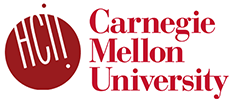Welcome to EUSES
The EUSES Consortium was a collaboration by researchers at Oregon State University, Carnegie Mellon University, Drexel University, Penn State University, University of Nebraska, Cambridge University, University of Washington, City University of London, University of Tulsa, IBM, and STEM Academy. Our goal was to develop and investigate end-user software engineering technologies for enabling End Users to Shape Effective Software.
Research
This project built on and contributed to our work on the following constituent technologies:
- The End-User Software Engineering Project at Oregon State and Nebraska
- The WYSIWYT Methodology for testing at Oregon State and Nebraska
- Natural Programming Project at Carnegie Mellon
- Type Systems for Spreadsheets being developed at Oregon State
- The Gender HCI project at Oregon State
- Education Activities at Oregon State and Pennsylvania State
Sample of publications
These are some of the more widely cited papers from the project.
- Ko, A., Abraham, R., Beckwith, L., Blackwell, A., Burnett, B., Erwig, M., Scaffidi, C., Lawrence, J., Lieberman, H., Myers, B., Rosson, M., Rothermel, G., Shaw, M., and Wiedenbeck, S. (2011). The State of the Art in End-User Software Engineering. ACM Computing Surveys, 43(3), 1-44.
- Erwig, M. (2009) Software engineering for spreadsheets. IEEE Software. 26(5), 25-30.
- Bogart, C., Burnett, M., Cypher, A., and Scaffidi, C. (2008) End-user programming in the wild: A field study of CoScripter scripts. IEEE Symposium on Visual Languages and Human Centric Computing, 39-46.
- Beckwith, L., Burnett, M., Grigoreanu, V., and Wiedenbeck, S. (2006) Gender HCI: What about the software? Computer. 39(11).
- Fisher, M., and Rothermel, G. (2005) The EUSES spreadsheet corpus: A shared resource for supporting experimentation with spreadsheet dependability mechanisms. ACM SIGSOFT Software Engineering Notes, 1-5.
- Scaffidi, C., Shaw, M., and Myers, B. (2005) Estimating the numbers of end users and end user programmers. IEEE Symposium on Visual Languages and Human Centric Computing, 207-214.
- Burnett, M., Cook, C., and Rothermel, G. (2004) End-user software engineering. Communications of the ACM. 47(9), 53-58.
- Ko, A., and Myers, B. (2004) Designing the Whyline: A debugging interface for asking questions about program behavior. Proceedings of the SIGCHI Conference on Human Factors in Computing Systems, 151-158.
- Ko, A., Myers, B., and Aung, H. (2004) Six learning barriers in end-user programming systems. IEEE Symposium on Visual Languages and Human Centric Computing, 199-206.
Funding
This work was funded in part by the National Science Foundation (ITR-0325273). Any opinions, findings, and conclusions or recommendations expressed in this material are those of the author(s) and do not necessarily reflect the views of the National Science Foundation.









